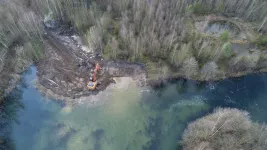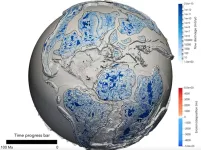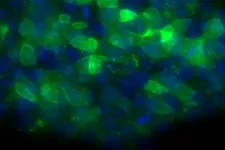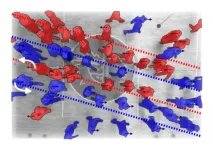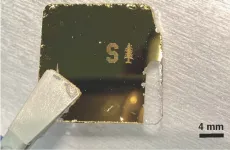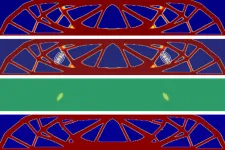(Press-News.org) In the largest ever genetic analysis of grapevine varieties, including samples from previously undocumented specimens in private collections, researchers provide new insights into how, when, and where wine and table grapevines were domesticated, which has been a longstanding question. “This work represents a major international collaborative effort, challenging to do in any circumstances but especially so given that we conducted it during the COVID-19 pandemic and associated lockdowns,” said author Wei Chen, who will also participate in an embargoed briefing on this study this week.
Even though wine and grapes are very important culturally, when wine and table grapevines were domesticated, and where, has been difficult to confirm. This is largely because there haven’t been sufficiently wide genetic sequencing analyses on grapevine varieties. As a result, there are several standing hypotheses in the literature that remain uncertain. For example, researchers have thought the cultivated wine grapevine (Vitis vinifera) had a single domestication in Western Asia, from which all wine varieties stemmed, and that it happened before the advent of agriculture. They’ve also thought wine grapevines were cultivated before table grape grapevines. Now, a study by Yang Dong and colleagues pushes back on both ideas. Based on vast grapevine genetic data studied, their report shows there were two domestication events for the cultivated wine grapevine in two distinct places – Western Asia and the Caucasus region – separated during the last glacial advance. “Despite being separated by over 1000 [kilometers], the two domestication processes appear to have occurred contemporaneously with a high degree of shared signatures of selection on the same genes,” writes Robin Allaby in a related Perspective. What’s more, they showed that these domestication events took place 11,000 years ago – in line with the advent of farming, and about 4,000 years later than some studies have shown. The genetic data also suggest that wine and table grapes were cultivated at the same time – not the wine grapevine first. The authors also identify some genes involved in domesticating grapes – improving flavor and color and texture – that could help winemakers improve wine today and make varieties more resilient to climate change and other stresses. Among their findings, they uncover more about the genetics underlying white grape color, and the ancient muscat flavor; at least one allele underlying muscat flavor may be detrimental to plant health, they say.
To do this work, Dong and colleagues generated a high-quality chromosome level reference genome of wild grapevine progenitor Vitis sylvestris. They then re-sequenced more than 3,000 individual grapevine plant samples collected from wide geographic locations – including from wild locations and from private collections. “Our collaborators reached out to their connections and looked for old and local varieties,” said Chen. “For instance, a lot of the Armenia [samples] from old vineyards turned out to be undocumented varieties.” The multimedia related to this paper includes videos from several international collaborators reflecting on the study’s process and significance.
**This paper is related to an Annual Meeting Briefing for Science, titled “Largest-ever genetic analysis of grapevine varieties reveals how glacial cycles shaped grape domestication and the rise of wine,” to be held on March 2nd at 11:00 am US ET. You can access the briefing virtually here if you are registered for the AAAS Annual Meeting (Please add briefing link to your calendars).
NOTE: If you’d like to attend this and other briefings at the 2023 Annual Meeting and have not yet registered, please do so by March 1st [Register Here. At the Registration Access Code step, please enter PRESS.]**
END
Largest-ever genetic analysis of grapevine varieties reveals how glacial cycles shaped grape domestication and the rise of wine
2023-03-02
ELSE PRESS RELEASES FROM THIS DATE:
Ecological improvement of freshwater ecosystems benefits fish and people
2023-03-02
Biodiversity is declining rapidly. Many conservation actions focus on single species. An alternative approach is to comprehensively improve ecological processes and habitats, thereby supporting entire species communities. This so-called ecosystem-based management is however rarely implemented because it is costly. There is also a lack of evidence that ecosystem-based habitat management is more effective than obvious alternatives, such as releasing animals to enhance stocks.
Important lesson for fish conservation
A research team based in Berlin, in close cooperation with numerous angling clubs organized in ...
Most detailed geological model reveals Earth’s past 100 million years
2023-03-02
Climate, tectonics and time combine to create powerful forces that craft the face of our planet. Add the gradual sculpting of the Earth’s surface by rivers and what to us seems solid as rock is constantly changing.
However, our understanding of this dynamic process has at best been patchy.
Scientists today have published new research revealing a detailed and dynamic model of the Earth’s surface over the past 100 million years.
Working with scientists in France, University of Sydney geoscientists have published this new model in the prestigious journal Science.
For the first time, it ...
Animals best to supress personalities for group efficiency
2023-03-02
Social animals should limit individuality to conform with the behaviour of the group, a University of Bristol study has found.
Scientists at Bristol’s School of Biological Sciences observed that group safety was improved when animals paid attention to the behaviours of each other.
Their findings, published today in PLoS Computational Biology, reveal that simple social behavioural rules can drive conformity behaviour in groups, eroding consistent behavioural differences shown by individual animals.
Lead author Dr Sean Rands said: “Personality suppression may ...
Possible treatment strategy identified for bone marrow failure syndrome
2023-03-02
Bone marrow is the spongy tissue inside bone responsible for making red blood cells, white blood cells and platelets. Bone marrow failure syndromes lead to an increased risk of developing dangerous infections, anemia and an increased risk of blood cancers.
Research led by Washington University School of Medicine in St. Louis has identified a possible treatment strategy for a rare bone marrow failure syndrome that is named poikiloderma with neutropenia. The work also may have implications for treating other bone marrow failure syndromes with similar underlying dysfunctions.
The research is published March 3 in the journal ...
Stick to your lane: Hidden order in chaotic crowds
2023-03-02
Have you ever wondered how pedestrians ‘know’ to fall into lanes when they are moving through a crowd, without the matter being discussed or even given conscious thought?
A new theory developed by mathematicians at the University of Bath in the UK led by Professor Tim Rogers explains this phenomenon, and is able to predict when lanes will be curved as well as straight. The theory can even describe the tilt of a wonky lane when people are in the habit of passing on one side rather than the other (for instance, in a situation where they are often reminded to ‘pass on the right’).
This mathematical ...
Crowdsourced reports can quickly identify an earthquake’s impact
2023-03-02
Within minutes, a statistical model based on a global database of public reports of ground shaking can be used to identify an earthquake as a high- or low-impact event, according to a new study published in The Seismic Record.
High-impact earthquakes, as defined by the study, are those associated with at least one destroyed building, at least 50 damaged buildings, at least two deaths, or any documented financial losses.
The researchers were able to provide impact results for 393 global earthquake events from 2021 within 10 minutes. Their model was developed using more than 1.5 million globally collected felt ...
Ocean surface tipping point could accelerate climate change
2023-03-02
The oceans help to limit global warming by soaking up carbon dioxide emissions. But scientists have discovered that intense warming in the future could lessen that ability, leading to even more severe warming.
The discovery comes from a study led by The University of Texas at Austin in which researchers analyzed a climate simulation configured to a worst-case emissions scenario and found that the oceans’ ability to soak up carbon dioxide (CO2) would peak by 2100, becoming only half as efficient at absorbing the greenhouse gas by 2300.
The decline happens because of the emergence of a surface layer of low-alkalinity water ...
DRI announces space education trainings for Nevada teachers
2023-03-02
DRI is pleased to announce “Space Education Educator Professional Development Training,” available for 80 educators. The training will be conducted in Las Vegas and Reno by four Nevada educators who were selected to attend the NASA Space Exploration Educators Conference in Houston in February. In addition to touring NASA facilities, the conference provided hands-on training in lesson plans and activities, and these educators will use the knowledge they gained to teach Nevada teachers.
“DRI is pleased to offer NASA-approved space education training to ...
Stanford researchers develop a new way to identify bacteria in fluids
2023-03-02
Shine a laser on a drop of blood, mucus, or wastewater, and the light reflecting back can be used to positively identify bacteria in the sample.
“We can find out not just that bacteria are present, but specifically which bacteria are in the sample – E. coli, Staphylococcus, Streptococcus, Salmonella, anthrax, and more,” said Jennifer Dionne, an associate professor of materials science and engineering and, by courtesy, of radiology at Stanford University. “Every microbe has its own unique optical fingerprint. It’s like the genetic and proteomic code scribbled ...
Integrating humans with AI in structural design
2023-03-02
Modern fabrication tools such as 3D printers can make structural materials in shapes that would have been difficult or impossible using conventional tools. Meanwhile, new generative design systems can take great advantage of this flexibility to create innovative designs for parts of a new building, car, or virtually any other device.
But such “black box” automated systems often fall short of producing designs that are fully optimized for their purpose, such as providing the greatest strength in proportion to weight or minimizing the amount of ...
